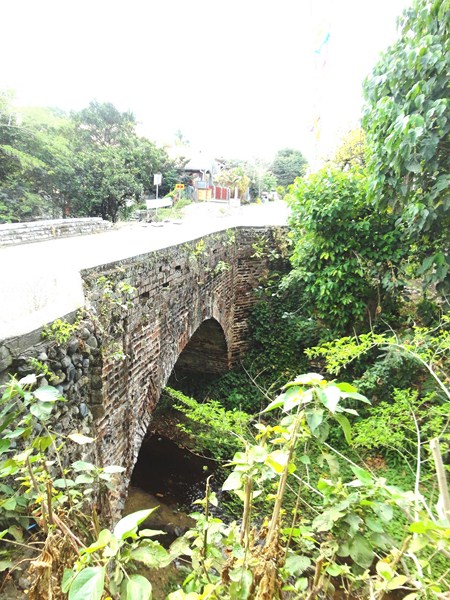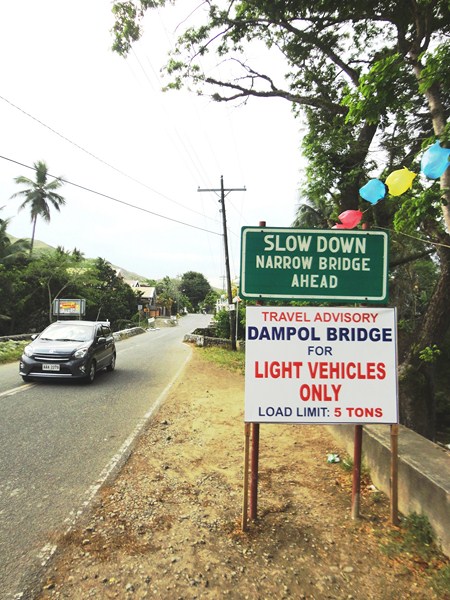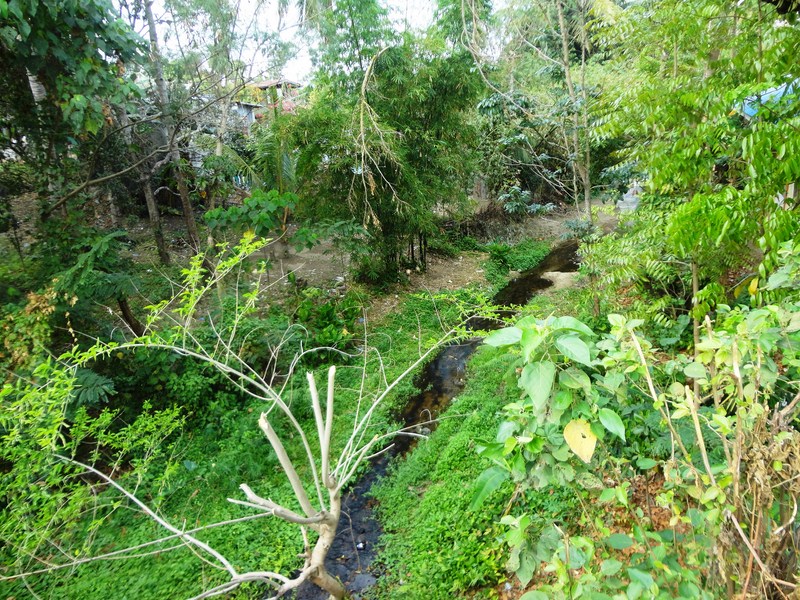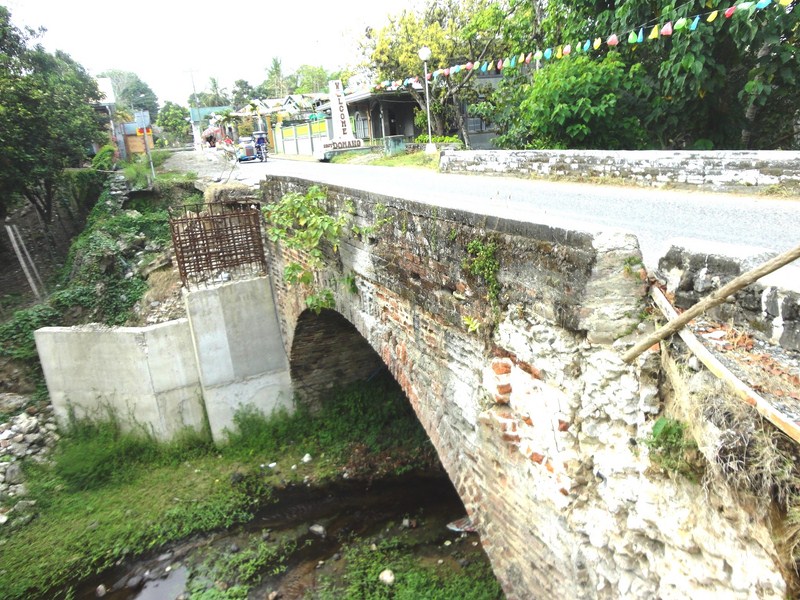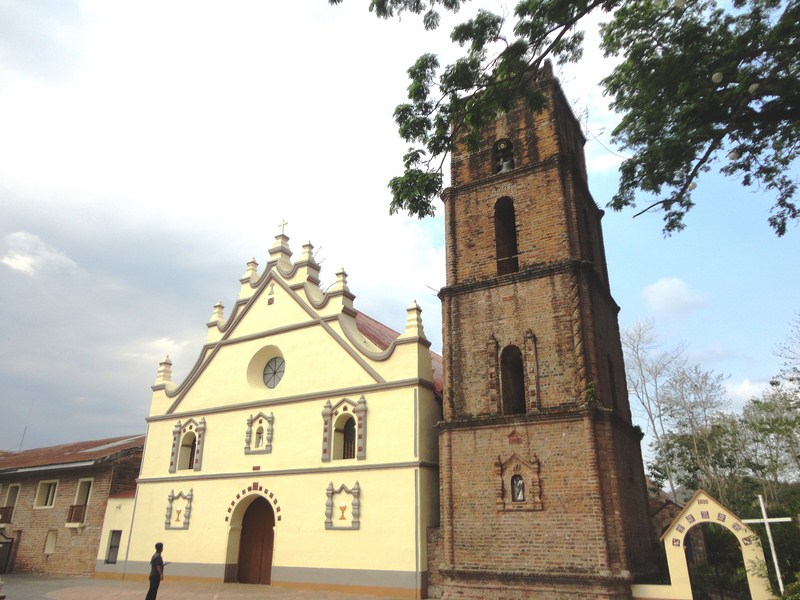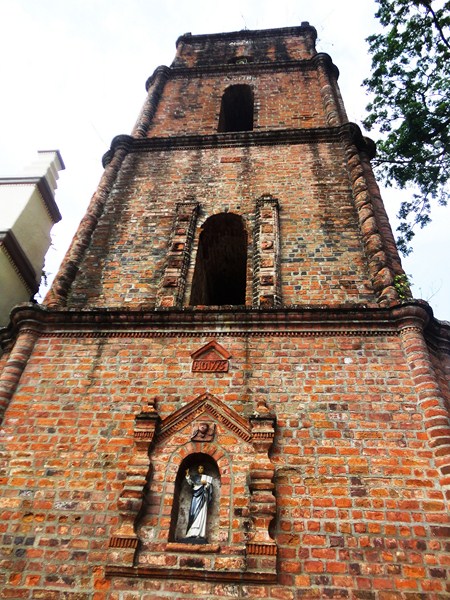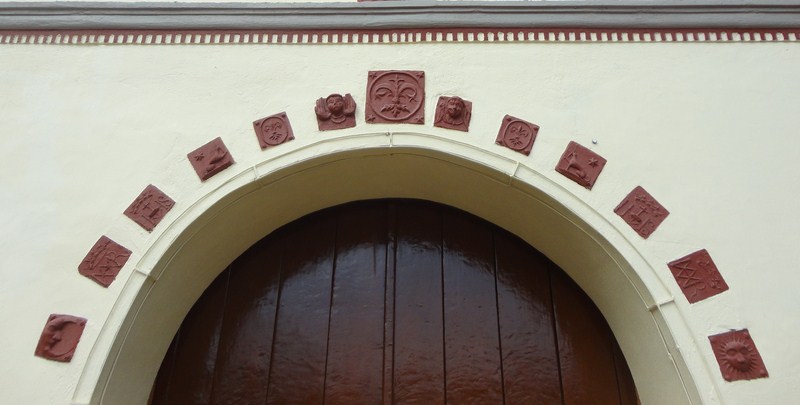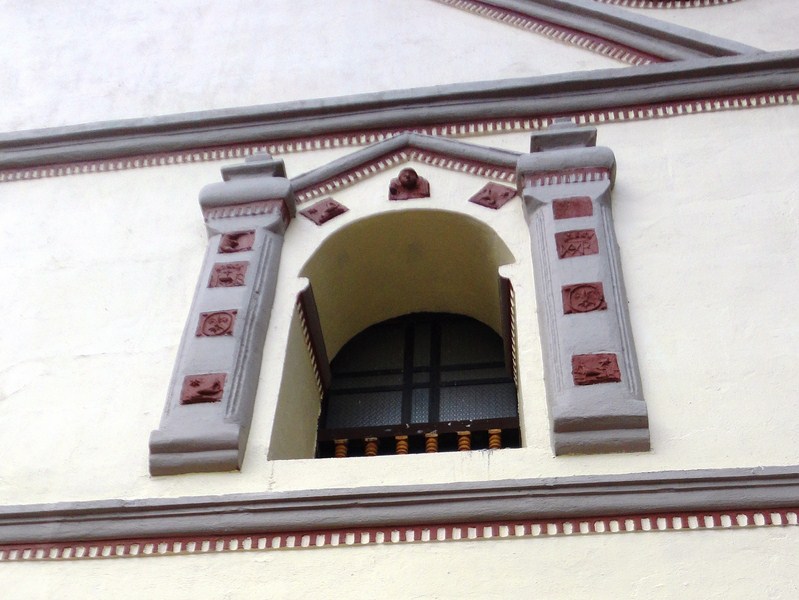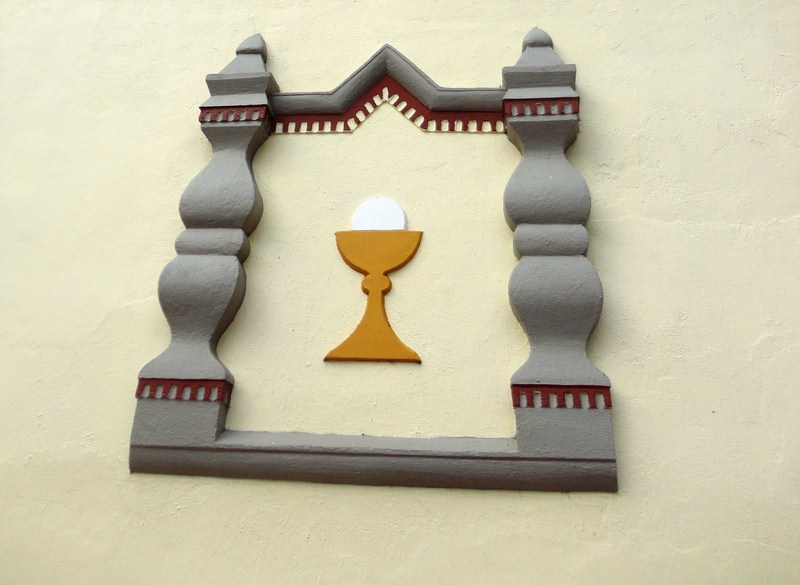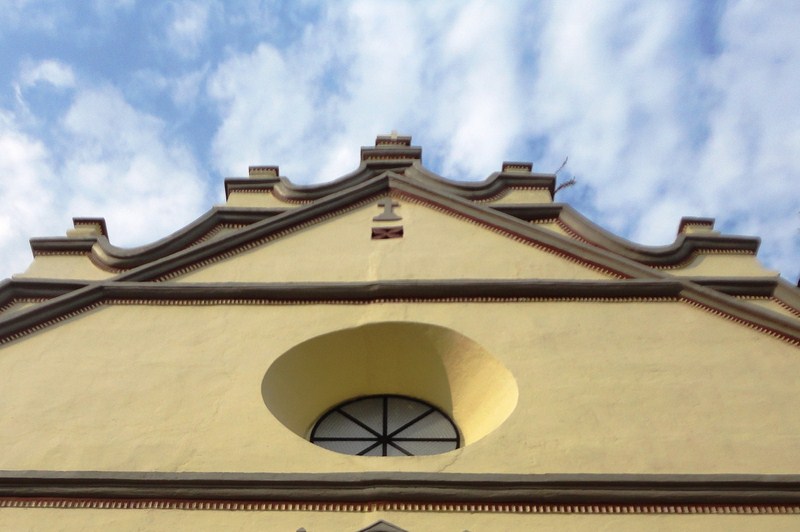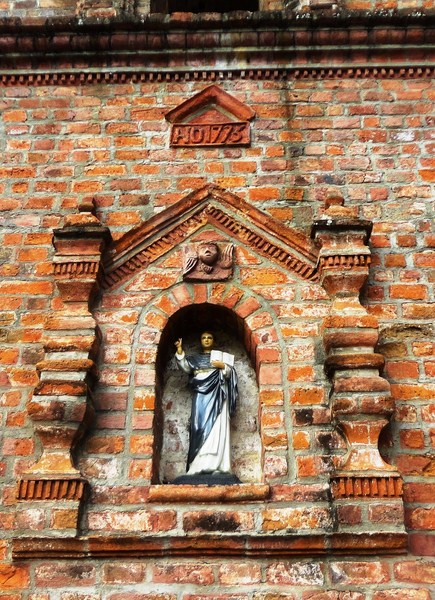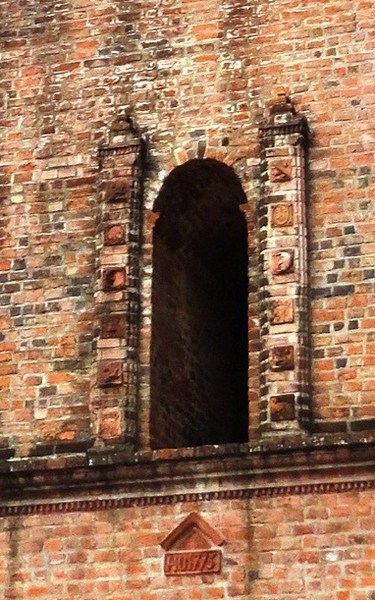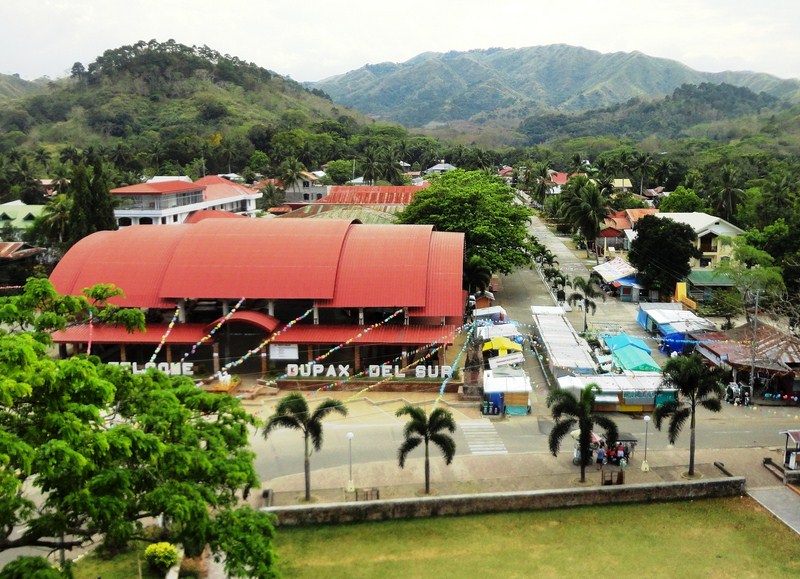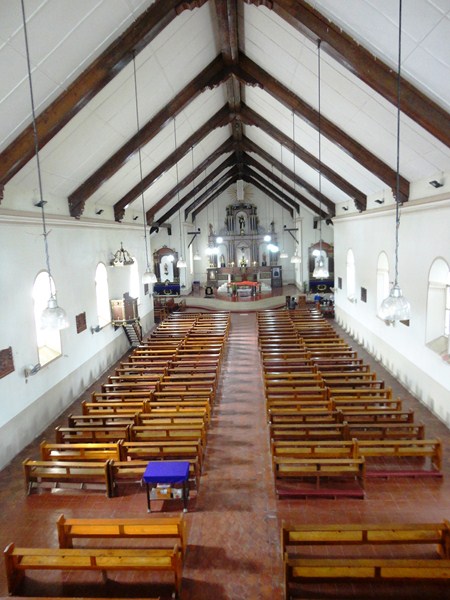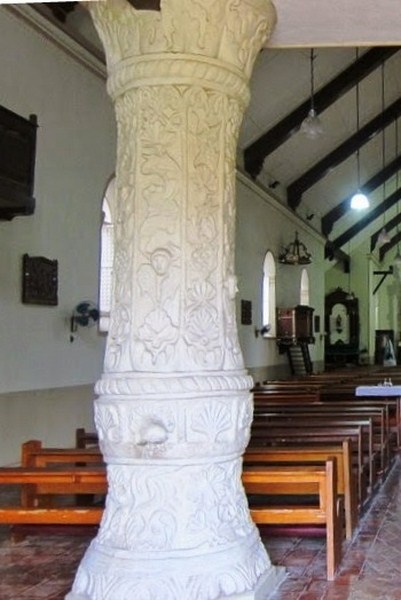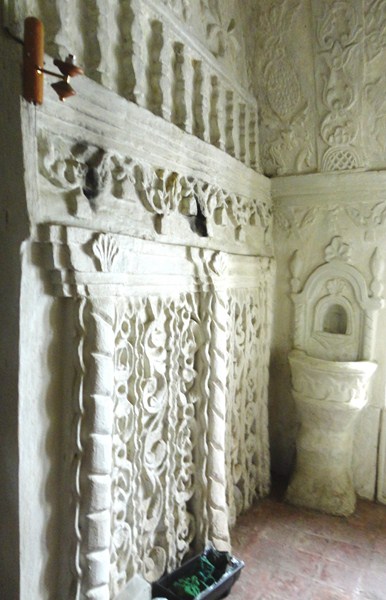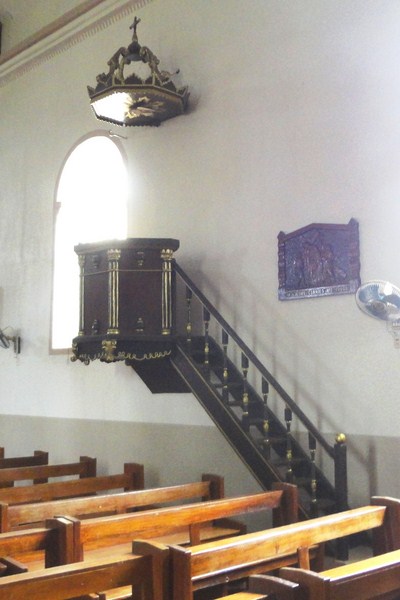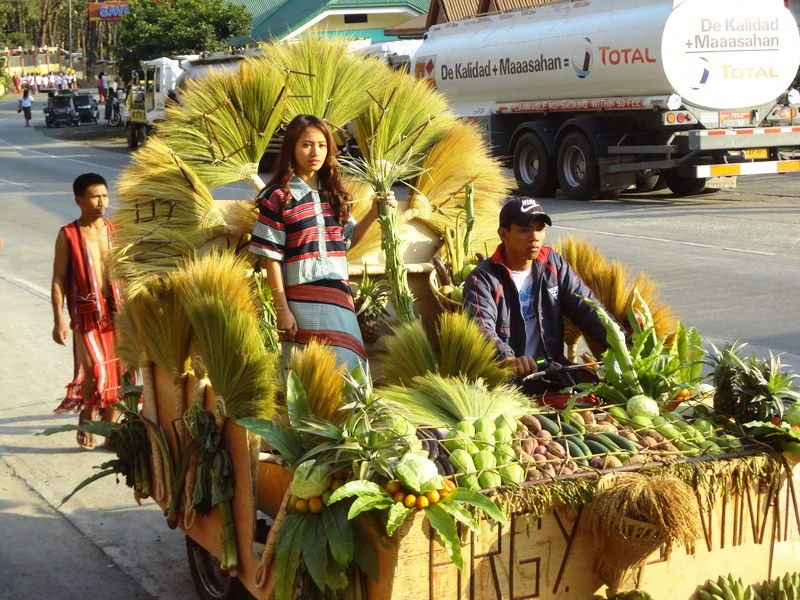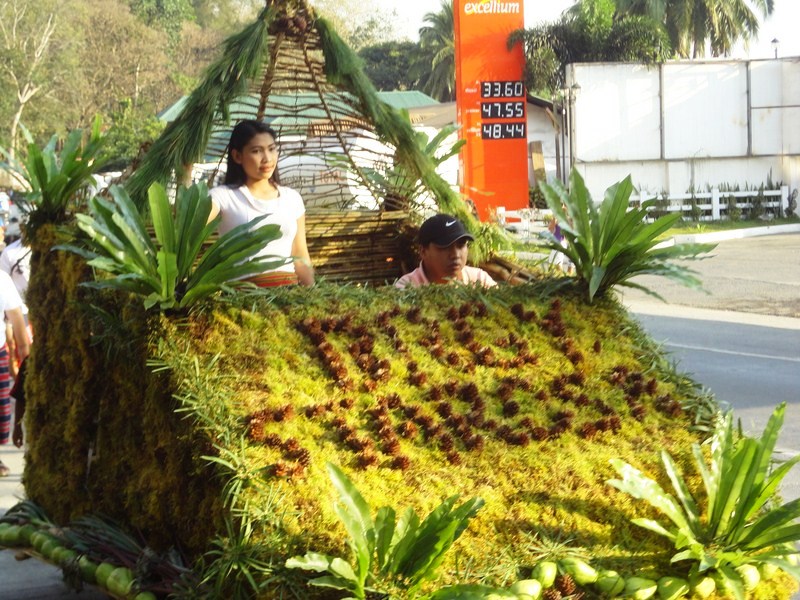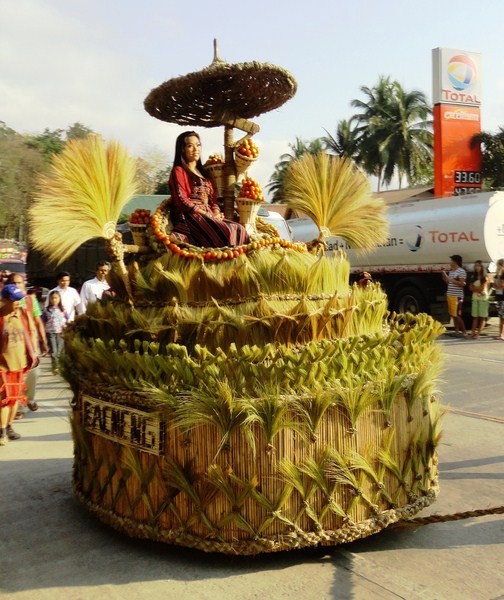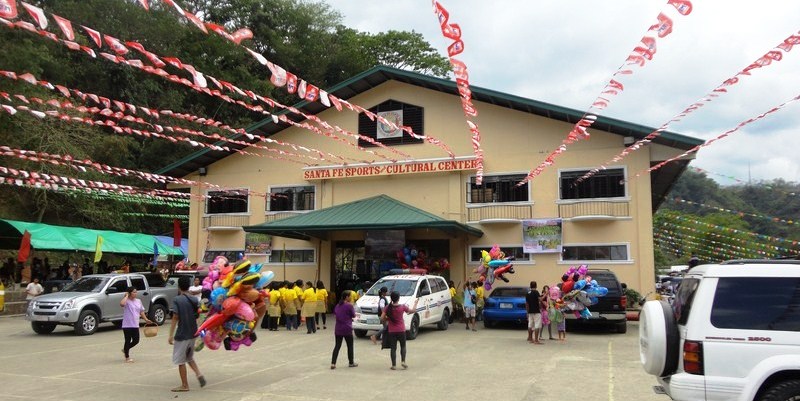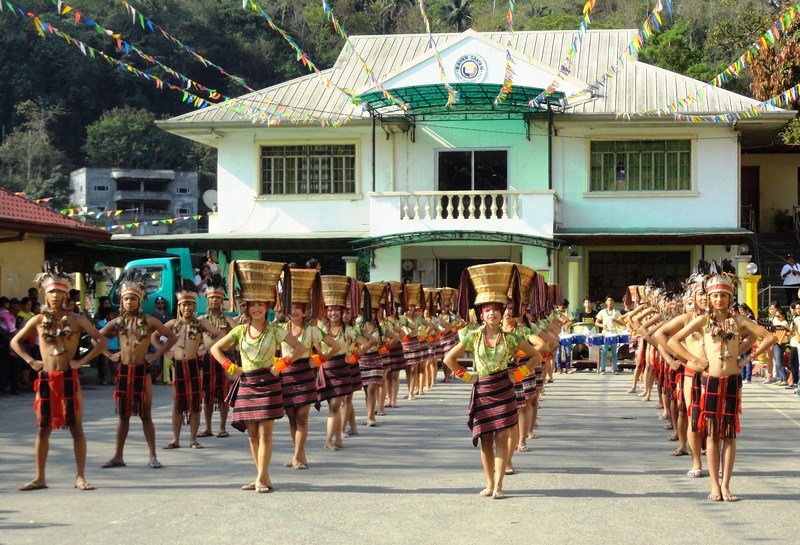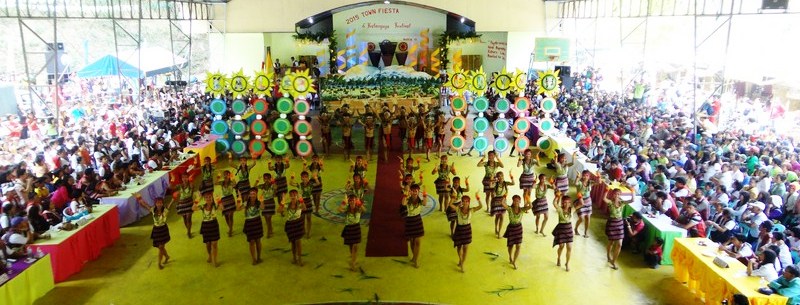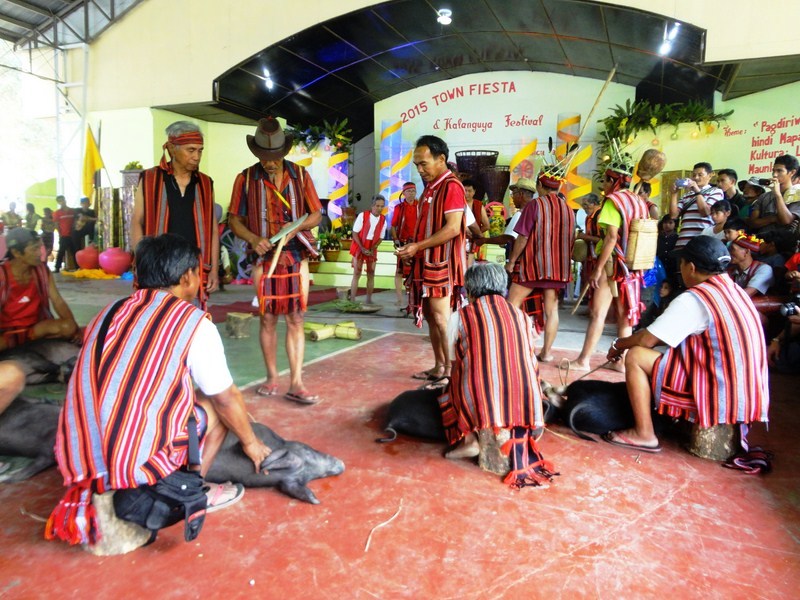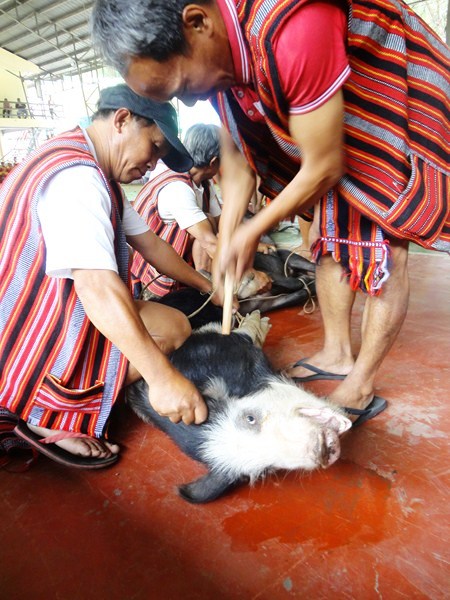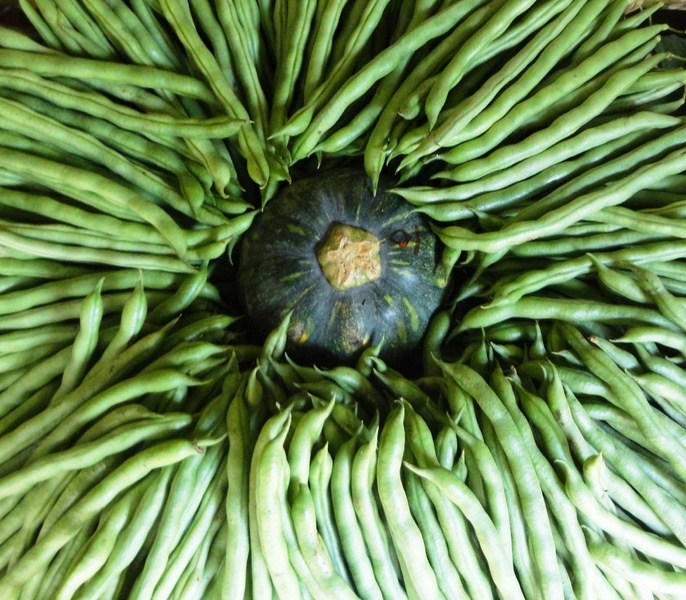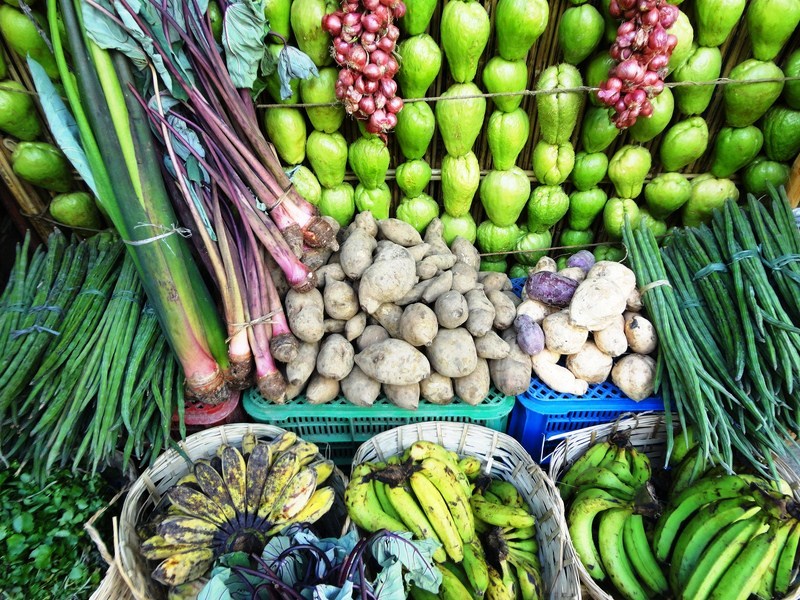While my media colleague Alexis Romero was busy interviewing Fr. Ferdinand E. Lopez at the Church of St. Vincent, I walked a short distance to Dampol Bridge which was said to have been built at the same time the church was being built. Most tourists and some locals pass by it and don’t know that they are stepping upon or driving on one of Dupax del Sur’s historical treasures.
This nearly two century old, single arch unreinforced bridge that spans the Abanatan Creek which divides Brgy. Dopaj and Brgy. Dumang, was built in 1818 by the Isinai and other indigenous groups living in the area. Its red-colored bricks were made from an old adobe workshop near the church, when Spanish Dominican friar Fr. Francisco Rocamora was vicar.
During a road construction and widening project undertaken by the DPWH -Nueva Vizcaya 2nd District Engineering Office in 2014 (who regarded the bridge as part of the National Highway), this important cultural and historical landmark was spared from demolition after an outcry from the Isinai community, but not after part of the protective brick wall had already been taken down in sections, exposing the inner filling to decomposition.
Today, only light vehicles (load limit: 5 tons) such as cars are allowed to cross the bridge, one at a time. A suggestion to re-route traffic away from Dampol Bridge is now being considered.

